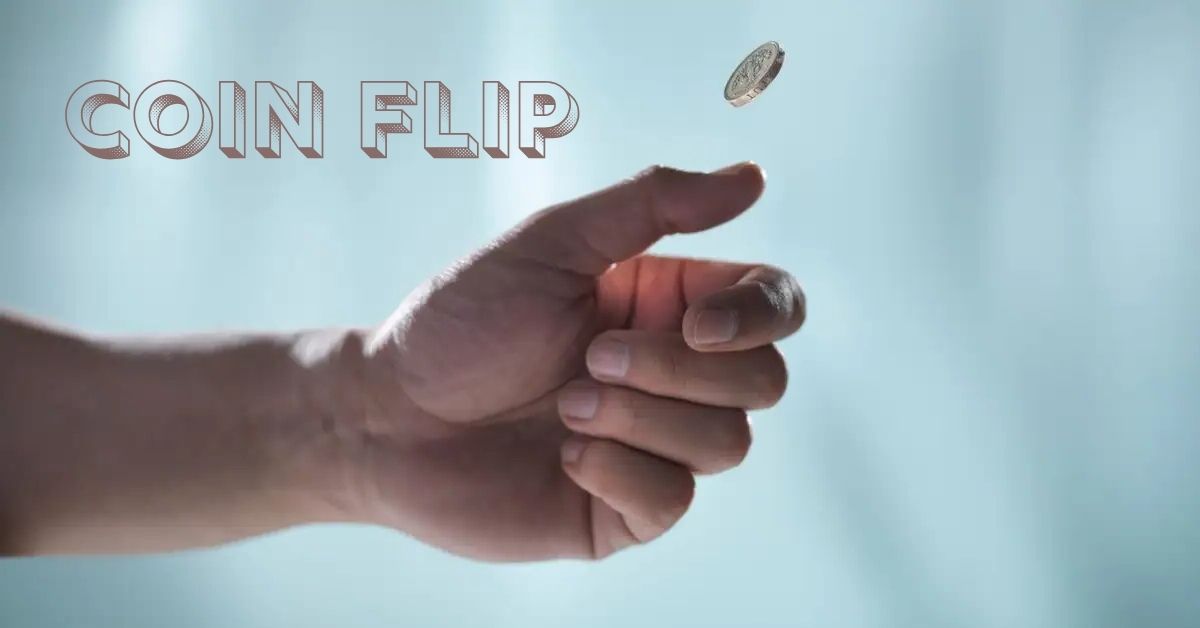A coin flip is one of the simplest yet most intriguing methods humans have used to make decisions. At first glance, it seems like a trivial act: toss a coin, let it land, and determine a result based on which side faces up. However, the coin flip carries a rich history, deep mathematical principles, and surprising psychological implications. From resolving disputes to being a symbol of chance and randomness, the coin flip is more than just a game—it is a reflection of human curiosity about probability and fairness.
The History of the Coin Flip
The practice of tossing a coin to make decisions dates back thousands of years. Ancient civilizations such as the Romans had a form of coin tossing called navia aut caput, meaning “ship or head,” which was used to settle disputes and make judgments. Over time, the coin flip spread across cultures and evolved into a universal symbol of chance. Even today, coin flips are used in sports, politics, and everyday decisions, highlighting the enduring appeal of this simple method of random choice.
How a Coin Flip Works
At its core, a coin flip is a mechanical process. When a coin is flipped, it rotates in the air while gravity and angular momentum influence its trajectory. The outcome—heads or tails—is determined by which side is facing up when the coin lands. Despite appearing random, physics plays a significant role, and small variations in flip technique can influence results. The inherent simplicity and fairness of a coin flip make it an ideal tool for decision-making when impartiality is essential.
The Mathematics of Coin Flipping
Coin flipping is closely tied to probability theory. A fair coin has two sides, so the theoretical probability of landing on either heads or tails is 50 percent. This makes the coin flip a classic example in statistics for illustrating randomness, probability, and even binary outcomes. Interestingly, while each individual flip is independent, long sequences of flips can produce patterns that spark debate over whether luck or randomness truly governs outcomes. Mathematicians and statisticians have long studied these patterns, using coin flips to teach probability concepts in classrooms worldwide.
Coin Flip in Decision-Making
Humans have always sought fair and impartial ways to make choices, and the coin flip offers exactly that. Whether deciding who goes first in a game, settling an argument, or determining outcomes in sports, the coin flip provides a neutral solution. Its simplicity eliminates bias, ensuring that neither party has an unfair advantage. Many professional sports, including football and cricket, rely on coin flips for critical decisions such as which team starts with possession, underscoring the trust society places in this ancient method.
Psychological Implications of the Coin Flip
Beyond mathematics and mechanics, the coin flip also has fascinating psychological effects. When faced with a difficult decision, flipping a coin can reduce anxiety by providing an external mechanism for choice. Interestingly, studies suggest that people sometimes use the coin flip as a tool to reveal their true desires; the instant emotional reaction to the result can clarify what they actually want. In this sense, the coin flip is not just about randomness—it also serves as a mirror reflecting human preference and intuition.
Cultural Significance of the Coin Flip
The coin flip has permeated cultural symbolism across the world. It is often associated with fate, luck, and chance. In literature, movies, and folklore, characters frequently resort to coin flips to decide their destinies. From the famous scenes in movies like No Country for Old Men to countless real-life scenarios, the coin flip is seen as a metaphor for life’s uncertainty and the thin line between success and failure. It embodies both the simplicity of choice and the complexity of human destiny.
Coin Flipping and Probability in Real Life
Coin flips are not just theoretical exercises—they have practical applications in daily life and professional fields. In experimental psychology, economists use coin flips to study decision-making under uncertainty. In finance, randomization methods inspired by coin flips help model risk and probability. Even in technology, algorithms sometimes mimic coin flips for binary decisions in computing. These real-world applications highlight how a seemingly simple act has profound implications for understanding chance, randomness, and decision-making.
The Physics Behind a Coin Flip
While most people consider a coin flip purely random, physics can actually predict outcomes under controlled conditions. Studies have shown that a skilled flipper can slightly bias the result by controlling angular momentum and height. However, in everyday situations, environmental variables such as air currents, surface texture, and the way the coin is caught make precise prediction virtually impossible. This blend of physical determinism and apparent randomness is part of what makes the coin flip so fascinating to scientists and casual observers alike.
Coin Flip in Games and Sports
Coin flips play a critical role in sports and games, ensuring fairness in competitive scenarios. In football, the pre-game coin toss determines which team starts with the ball, while in cricket, it decides batting or fielding order. Board games and casual competitions also rely on coin flips to resolve tie-breakers or choose starting players. Its neutrality and simplicity make it an indispensable tool in both professional and recreational settings.
Coin Flip as a Tool for Teaching
Educators often use coin flips to teach probability and decision-making in classrooms. By observing sequences of flips, students learn about independence, chance, and statistical variance. Coin flips also illustrate the difference between theoretical and experimental probability, showing how small sample sizes can produce surprising streaks. Beyond math, coin flips teach important life lessons about fairness, risk, and the balance between chance and choice.
Common Myths About Coin Flipping
Despite its apparent simplicity, many myths surround coin flipping. Some believe that coin flips can somehow be “due” to land a certain way, falling into the gambler’s fallacy trap. Others think certain techniques guarantee results. In reality, each flip is independent, and the outcome is primarily determined by probability, with minor influences from physics. Understanding these myths helps prevent misinterpretation and reinforces the coin flip’s role as a fair and impartial method.
Modern Uses of the Coin Flip
In the digital age, coin flips have evolved beyond physical coins. Online randomizers, apps, and virtual coin flips serve the same purpose as their traditional counterparts. They are used in decision-making, games, lotteries, and even online promotions. Digital coin flips combine convenience with the psychological thrill of chance, making them accessible to anyone with a smartphone or computer while preserving the same principles of randomness and fairness.
Conclusion
The coin flip is a deceptively simple act with a rich history, deep mathematical roots, and profound psychological and cultural significance. It serves as a neutral tool for decision-making, a teaching instrument, and a symbol of chance in human life. Whether used to decide the winner of a game, to understand probability, or to reflect on personal choices, the coin flip remains a timeless method of navigating uncertainty. Its blend of simplicity, fairness, and unpredictability ensures that it will continue to fascinate and serve humanity for generations to come.
FAQs
What is the probability of heads or tails in a coin flip?
Each side has an equal probability of 50 percent when the coin is fair.
Can a coin flip be biased?
Yes, slight variations in flip technique or coin weight can influence results, but casual flips are generally fair.
Where did coin flipping originate?
The practice dates back to ancient Rome, where it was called navia aut caput.
Why do sports use coin flips?
Coin flips provide a neutral and fair method for deciding starting positions or turns.
Can a coin flip reveal personal preferences?
Yes, many people realize their true desires based on their immediate emotional reaction to the flip.












